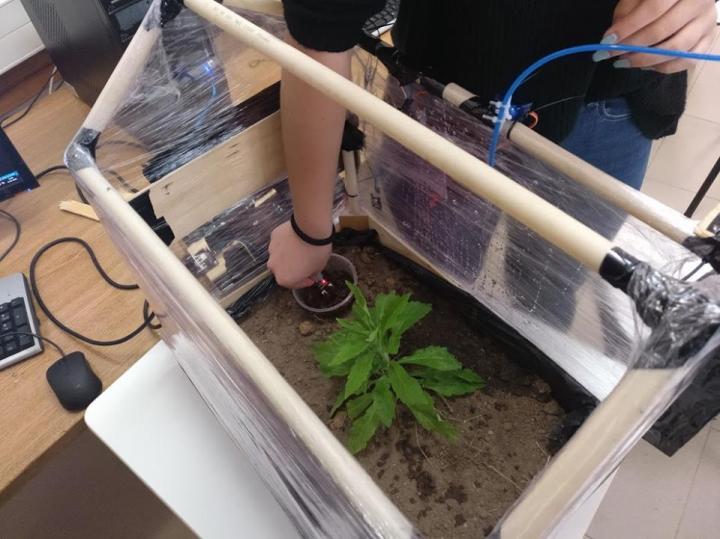From seed to compost: circulation of matter in natureTrack the food on your plate to understand global food supply

Ready for action?
What
The possible connections with your curriculum
Who
The people who take up the teacher role
Where
The locations where learning takes place
With
The community stakeholders to collaborate with
Short abstract
This project will examine two specific points in the food chain. It will start with food’s journey from field or factory to plate. It will then explore what happens when leftovers are thrown away. Research will be undertaken to identify where food comes from and how to reduce waste. Students will experiment with compost, recycling leftovers so that they can be used as a fertiliser for the growth of new food products. They will learn about the requirements of effective planting, before designing a new school garden. They will then share their journey in an exhibition for their community.
Students begin by researching the origin of the food they eat and finding out how many kilometres it travelled to reach their tables. Locations will be mapped, marking the path of each product with a string. Students will consider the impact these journeys have on local and global ecosystems.
Students will prepare questions for an expert related to the composting process, building composters, and the use of fertilisers. The expert will explain the composting process itself and answer questions. During the meeting, the students will write down the most important information in an interesting way.
Working in groups, students will build a composter, with each group being responsible for a different part of the composter. After construction is completed, the materials to be composted will be placed inside. For the next 2 weeks, they will check the compost level every 2 days, measure the temperature, and record their observations.
Students will conduct experiments during which they investigate what can be placed in the composter, which products decompose faster, and what speeds up composting.
Students will learn about the effect of fertilisation on the nutritional value of soil. They will learn how to make a soil acid meter, then take soil samples from different places, determining their pH. They will observe the plants at the sampling site. After discussing different types of fertilisers: mineral, natural and plant residues, students will mix their soil samples with various fertilizers and check how the pH of the samples change.
Students will design a garden based on data. They will analyse what plants need to provide the right conditions for growth. On the basis of their previous knowledge, they will gather the materials they need and begin work on the garden.
Students will prepare an event for the local community and parents at the community garden created as part of the project. Photo panels will be mounted on the fence or in the garden, and they will prepare a film to project onto the facade of the building. If possible, they will also present the first crops of the garden.
Teacher feedback
Aha moments
Uh oh moments
- Our composter and garden were too big. It took a long time to make them and then observe them. Working on a small scale would have been more efficient without compromising on learning outcomes.
- The students shared the plants they took care of. Unfortunately, some of them died, which made students sad and less willing to engage with the project.
General tips
- If you don't have space and you want to save time, use small wooden boxes instead of building a composter - they work well. Instead of digging a garden, you can use pots that you put on the windowsill.